Clown Loach is a very popular fish for a good reason. They are attractive, peaceful, and relatively easy to care for. They can grow quite large, so make sure you have enough room in your tank before adding one.
They get their common name from the black and yellow stripes that run down their sides. These stripes make them look a bit like clowns.
This guide will cover the basics of keeping Clown Loaches in your aquarium. So, let’s get started!
Table of Contents
- Species Summary
- Clown Loach Care
- Clown Loach Tank Size
- Clown Loach Water Parameters
- Clown Loach Filtration
- Heater
- Lighting
- Aquarium Decoration
- Other Tank Accessories
- Cleaning The Tank
- Clown Loach Common Possible Diseases
- Clown Loach Treatment And Medications Of Diseases
- Clown Loach Food
- Clown Loach Foods To Avoid
- Clown Loach Tank Mates
- Fish to Avoid
- Advantages Of Having Clown Loach In Your Tank
- Disadvantages Of Having Clown Loach In Your Tank
- Now You’re Prepared
Species Summary
| Scientific name: | Chromobotia macracanthus |
| Common name: | Clown Loach |
| Size: | Up to 12 inches |
| Tank size: | 100 gallons for a small group of at least 3 |
| Temperature: | 75°-86°F |
| Behavior: | Peaceful |
| pH range: | 5.0-8.0 |
| Life span: | 10-30 years |
| Water Hardness: | 5 and 12 dGH |
| Water Type: | Fresh |
| Care Level: | Easy |
| Compatibility: | Peaceful |
| Origin: | Indonesia |
| Diet: | Omnivorous |
If you’ve ever been to a pet store, you’ve probably seen Clown Loach. They’re one of the most popular fish kept in aquariums. They are native to Indonesia, where they live in fast-flowing streams.
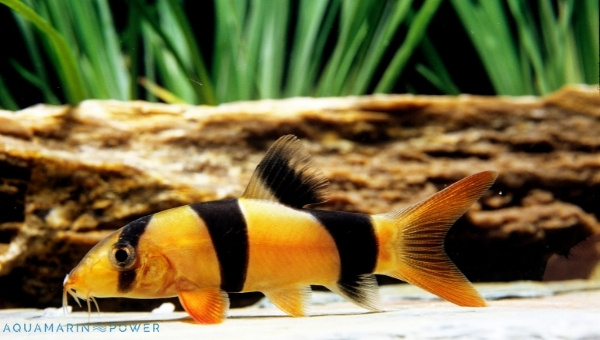
They require a lot of oxygen and like to swim in currents. In the wild, they often hide among rocks and plants.
Here are some basic facts about Clown Loaches
Clown Loach Appearance
There’s no mistaking a Clown Loach when you see one. They have black and yellow stripes that run down their sides, making them look like little clowns.
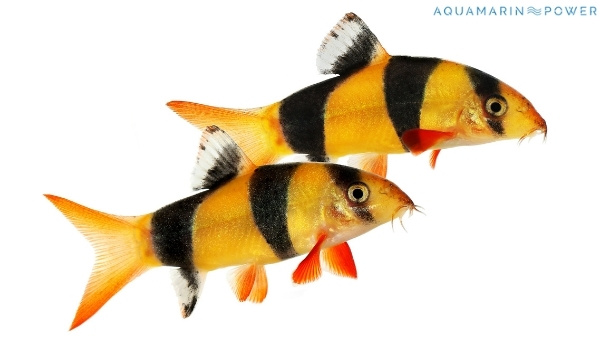
Their large, flattened head can also identify them. The body is pretty elongated and streamlined. The dorsal line on their back is dark, and the fins are a light yellow. This fish’s mouth is upturned, giving it a bit of a sad expression.
Several pairs of barbels (whiskers) grow on their upper and lower jaws. These barbels help them find food in the dark. While it’s difficult to see, Clown Loach also has tiny scales on their skin.
The base color of the fish is a light yellow, and the stripes are black. The fins are also yellow, except for the dark dorsal fin.
The Clown Loach is sexually dimorphic, which means the sexes look different. Males are usually larger and have more pointed fins than females.
Clown Loach Size & Growth Rate
The average Clown Loach size is around 6-8 inches, but they can grow up to 12 inches long.
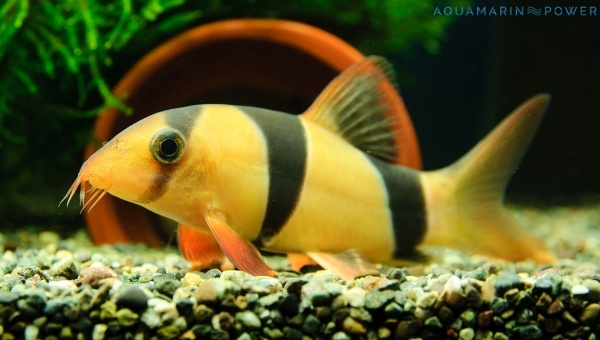
The growth is slow, so they won’t outgrow your tank quickly. But it’s essential to plan for their eventual size, especially if you’re keeping them in a smaller tank.
When you see these fish in a pet store, they’ve usually been juveniles. It can take up to 10 years to reach their full size.
Clown Loach Lifespan
The typical lifespan is around 10 years, but they can live up to 30 years.
There are a lot of variables that can affect a fish’s lifespan, so it’s impossible to give an exact number. But, knowing how long Clown Loach can live is helpful information nonetheless.
Clown Loach Behavior & Temperament
Clown loaches are a very social fish, and they should be kept in groups of at least three. They are a bottom dweller and will spend most of their time on the bottom of your tank.
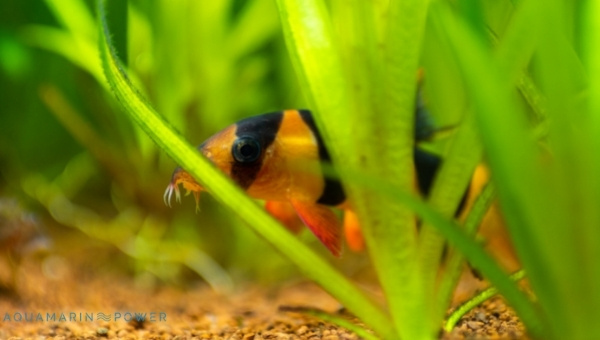
They are nocturnal, and they will become more active at night. They can be aggressive towards other fish, and they should not be kept with other fish that are smaller than them. They are very active fish, and they require a lot of space. The minimum tank size for them is 30 gallons.
You can usually see them playing with each other at night. They will swim around and play together in the tank.
They are considered peaceful fish. They should be kept in groups of 3 or more and should not be mixed with other fish that are smaller than them. They make a great addition to any community tank and are an excellent choice for beginners and experienced aquarists alike.
Clown Loach Breeding
Clown loaches are a popular fish for breeding, and they can be bred in a variety of different ways.
One way to breed them is to place them in a breeding tank. This tank should be filled with water at the same temperature as the water in your main tank. The breeding tank should also have a lot of plants and hiding places for the fish to spawn in.
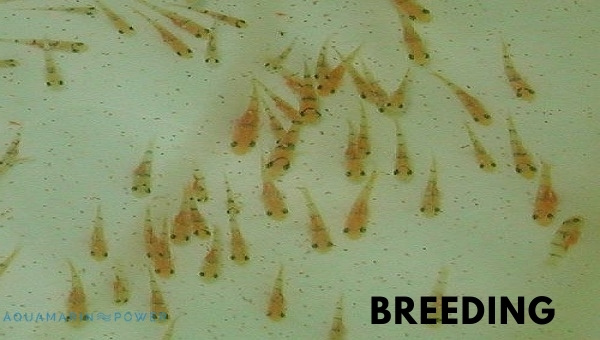
The other way to breed them is to place them in a spawning tank. This tank should be filled with water at the same temperature as the water in your main tank. The spawning tank should also have a lot of plants and hiding places for the fish to spawn in.
They can also be bred by placing them in a tank with males and females. The male will start to chase the female, and then the female will release her eggs. The male will then fertilize the eggs.
They can also be bred by separating the males and females into different tanks. The males will start to build nests out of bubbles, and the females will lay their eggs inside the nests.
Clown Loach Care
The Clown Loach care is relatively easy, making them a good choice for beginner fish keepers. Unlike other species of Loach, Clown Loaches are not as sensitive to water conditions.
This species can adapt to a wide range of water hardness and pH levels, making them one of the most versatile fish you can keep.
Providing a healthy environment for your Clown Loach is still essential. Here are some tips on how to do that:
Clown Loach Tank Size
Clown Loach should be kept in a tank of at least 100 gallons. Remember, they can grow up to 12 inches long, so you’ll need a tank to accommodate their size.
You’ll need an even larger tank if you’re keeping more than one Clown Loach. Groups of 3 or more Clown Loaches should be kept in a tank of 100 gallons or larger.
However, we recommend keeping only one per tank to prevent them from becoming stressed.
Clown Loach Water Parameters
The most important thing to remember when setting up your tank is to provide a healthy environment for your fish. This means keeping the water parameters within their preferred range.
Clown Loaches like soft to medium water in hardness and pH levels of 5.0-8.0. They can adapt to a broader range of conditions, but it’s best to keep them in water that matches their natural habitat as closely as possible.
Water Temperature: Like most fish, Clown Loach prefers water temperatures of 75°-86°F.
Water Changes: It’s important to keep up with water changes to maintain the health of your fish. We recommend changing 25-50% of the tank water every week.
It’s also very important to perform a regular water test to ensure the water parameters are within the preferred range. Use a reliable test kit to test ammonia, nitrite, and pH levels.
Clown Loach Filtration
Clown Loach needs a sound filtration system to keep the water clean and healthy. We recommend using a filter that can turn over the entire volume of the tank at least 3 times per hour.
A good filter will help keep the water parameters in check and also help reduce the amount of maintenance you have to do on the tank.
Some of the famous filters are:
- Eheim 2217: These filters are German-made and some of the industry’s best. They come with various filtration options, including mechanical, chemical, and biological filtering.
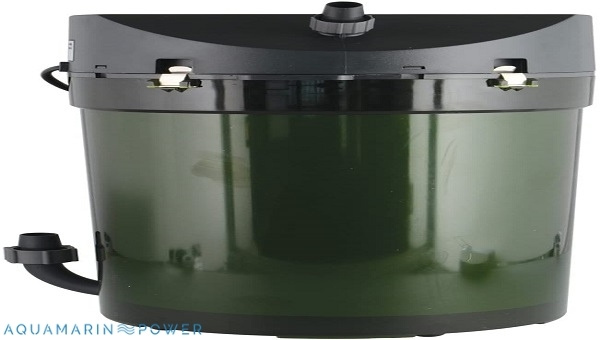
- AquaC Remora Pro: This is a hang-on back filter designed for small to medium-sized tanks. It comes with a built-in protein skimmer to help remove unwanted toxins and debris from the water.
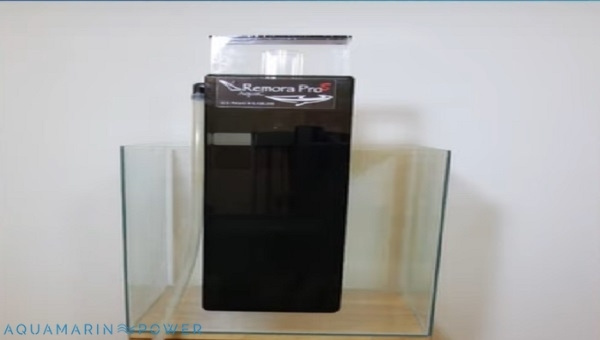
- Fluval FX6: This is a top-of-the-line canister filter that can handle tanks up to 250 gallons. It comes with various filtration options, including mechanical, chemical, and biological filtering.
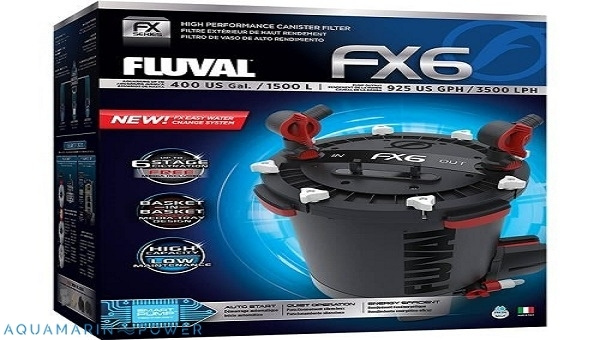
- Aqua Clear 70: This is a popular filter for up to 70 gallons of aquariums. It comes with various filtration options, including mechanical, chemical, and biological filtering.
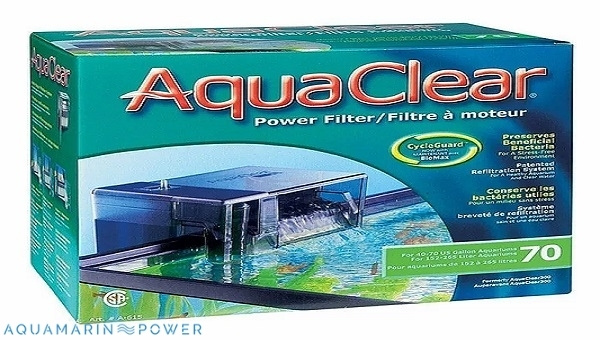
Heater
Clown Loaches require a heater to maintain their preferred water temperature. We recommend using a heater that can keep the water temperature in the range of 75°-86°F.
If you live in a climate where the temperatures drop below 75°F, you will need to use a heater to keep your Clown Loach comfortable.
Some of the famous heaters are:
- Eheim Jager: This is a popular heater for up to 250 gallons of aquariums. It comes with various safety features, including an automatic shut-off system if the water gets too hot or cold.
- Aqua heat: This is a popular heater for up to 100 gallons of aquariums. It comes with various safety features, including an automatic shut-off system if the water gets too hot or cold.
- Tetra Heater: This is a popular heater for up to 50 gallons of aquariums. It comes with various safety features, including an automatic shut-off system if the water gets too hot or cold.
Lighting
Clown Loaches do not require specialized lighting, but we recommend using a light that will provide a few hours of light per day.
A good light will help keep the tank healthy and make it easier to view your fish.
Some of the famous lights are:
- Fluval LED: This is a popular LED light for 20 gallons of aquariums. It provides a natural daylight effect and comes with various mounting options.
- AquaIllumination LED: This is a popular LED light for up to 50 gallons of aquariums. It provides a natural daylight effect and comes with various mounting options.
Aquarium Decoration
Clown Loaches do not require any specialized decoration, but we recommend using a few pieces of driftwood and rocks to create hiding places for your fish.
A good decoration will help make your tank look more natural and provide your fish with a place to hide.
Some of the famous decorations are:
- Driftwood
- Rocks
Other Tank Accessories
In addition to a heater, filter, and light, there are a few other accessories that you may want to consider for your tank.
- Aquarium Vacuum: This is a popular accessory for aquariums of all sizes. It can be used to suck up unwanted debris from the bottom of your tank.
- Siphon Hose: This is a popular accessory for aquariums of all sizes. It can be used to suck up unwanted debris from the bottom of your tank or to change your tank water.
- Thermometer: This is a popular accessory for aquariums of all sizes. It can be used to monitor the water temperature in your tank.
Cleaning The Tank
Now, before you do any cleaning, we recommend taking a few steps to ensure the safety of your fish.
First, unplug your heater and remove it from the tank.
Next, remove any decorations from the tank.
Finally, use a siphon hose to suck up any unwanted debris from the bottom of your tank.
Once you have finished cleaning, we recommend re-adding your decorations and heater to the tank.
Clown Loach Common Possible Diseases
There are a few common diseases that can affect clown loach.
- Fish ich: This is a common parasite that can affect all types of fish. It causes small white spots to form on the body of the fish.
- Fish tuberculosis: This is a common bacterial infection that can affect all types of fish. It causes lesions to form on the body of the fish.
- Fungal infections: This is a common fungal infection that can affect all types of fish. It causes patches of fungus to form on the body of the fish.
- Ectoparasite: This is a common parasite that can affect all types of fish. It causes patches of parasites to form on the body of the fish.
If you notice any signs of disease in your clown loach, we recommend consulting a veterinarian.
Clown Loach Treatment And Medications Of Diseases
A few treatments and medications can be used to treat diseases in clown loach.
- Fish ich: This is a common parasite that can be treated with an over-the-counter medication called ichthammol.
- Fish tuberculosis: This is a common bacterial infection that can be treated with an antibiotic called tetracycline.
- Fungal infections: This is a common fungal infection that can be treated with an over-the-counter medication called fungicide.
- Ectoparasite: This is a common parasite that can be treated with malachite green medication.
The most common way to treat diseases in clown loach is with medication. However, if the infection is severe, you may need to consult a veterinarian.
Clown Loach Food
Clown loaches are omnivorous and will eat a variety of foods.
They can be fed a diet of both live and frozen foods and a diet of pellets and flakes.
Some of the common foods that they will eat are:
- Live food: This includes live brine shrimp, bloodworms, and earthworms.
- Frozen food: This includes frozen brine shrimp, bloodworms, and earthworms.
- Flakes: This consists of meat-based flakes and vegetable-based flakes.
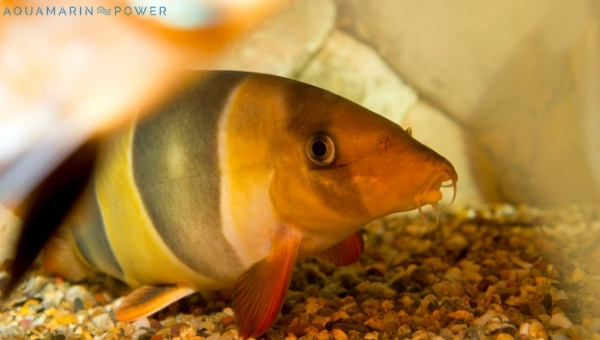
When feeding your clown loach, we recommend a diet that is high in protein and low in carbohydrates. This will help to keep them healthy and active.
One of the best ways to ensure that your clown loaches are getting the proper nutrition is to feed them various foods. This will help to provide them with all the nutrients that they need.
For snacks, we recommend feeding them freeze-dried bloodworms or brine shrimp. This will help to keep them healthy and active.
Clown Loach Foods To Avoid
There are a few diet foods that we recommend avoiding when feeding your clown loach.
- Meat-based pellets: These pellets are high in protein and carbohydrates.
- Vegetable-based pellets: These pellets are low in protein and high in carbohydrates.
We recommend avoiding meat-based pellets and vegetable-based pellets when feeding your clown loach. Instead, we recommend feeding them a diet of both live and frozen foods and a diet of pellets and flakes. This will help to provide them with all the nutrients that they need.
Clown Loach Tank Mates
When choosing a tank mate for your clown loach, we recommend choosing a fish that is larger than them.
Some good tank mates for clown loaches are:
Fish to Avoid
The following fish should not be kept with clown loaches:
- Other loaches
- Danios
- Platies
- Guppies
- Kuhli Loach
So, as you can see, there are a number of different fish that can be kept with clown loach. When choosing a tank mate for them, we recommend choosing a larger fish than they are. This will help to prevent the other fish from being bullied by them.
Advantages Of Having Clown Loach In Your Tank
The first advantage of having clown loaches in your tank is that they are very active fish. They will swim around and play together in the tank. This makes them a great addition to any community tank.
The second advantage is that they are peaceful fish. They should be kept in groups of 3 or more and should not be mixed with other fish that are smaller than them. This makes them a good choice for both beginner and experienced aquarists alike.
The third advantage is that they are a popular fish for breeding. They can be bred in various ways and can be successful in both community tanks and breeding tanks.
So, as you can see, there are many different reasons why you should add clown loaches to your tank. They are a very active fish that is peaceful and popular for breeding. They make a great addition to any community tank and are a good choice for beginners and experienced aquarists alike.
Disadvantages Of Having Clown Loach In Your Tank
The Only disadvantage of having clown loach in your tank is that they can get very large. They will grow up to about12 inches long and can eventually outgrow the tank. So, you need to make sure that you have a large enough tank for them before you add them to your aquarium.
Now You’re Prepared
Now that you know all there is to know about clown loach, you’re prepared to add them to your tank! Be sure to give them plenty of room to swim and play and make sure that you have a large enough tank before you add them. They are a popular fish for breeding and will make a great addition to any community tank.
I hope this article was helpful and informative. If you have any questions, feel free to leave a comment below. Thanks for reading!



